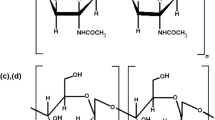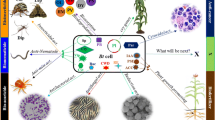Abstract
Av3, a neurotoxin of Anemonia viridis, is toxic to crustaceans and cockroaches but inactive in mammals. In the present study, Av3 was expressed in Escherichia coli Origami B (DE3) and purified by reversed-phase liquid chromatography. The purified Av3 was injected into the hemocoel of Helicoverpa armigera, rendering the worm paralyzed. Then, Av3 was expressed alone or fusion expressed with the Cry1Ac in acrystalliferous strain Cry−B of Bacillus thuringiensis. The shape of Cry1Ac was changed by fusion with Av3. The expressed fusion protein, Cry1AcAv3, formed irregular rhombus- or crescent-shaped crystalline inclusions, which is quite different from the shape of original Cry1Ac crystals. The toxicity of Cry1Ac was improved by fused expression. Compared with original Cry1Ac expressed in Cry−B, the oral toxicity of Cry1AcAv3 to H. armigera was elevated about 2.6-fold. No toxicity was detected when Av3 was expressed in Cry−B alone. The present study confirmed that marine toxins could be used in bio-control and implied that fused expression with other insecticidal proteins could be an efficient way for their application.



Similar content being viewed by others
References
Beress L, Beress R, Wunderer G (1975) Isolation and characterisation of three polypeptides with neurotoxic activity from Anemonia sulcata. FEBS Lett 50:311–314
Bietlot HP, Vishnubhatla I, Carey PR, Pozsgay M, Kaplan H (1990) Characterization of the cysteine residues and disulphide linkages in the protein crystal of Bacillus thuringiensis. Biochem J 267:309–315
Bravo A, Gill SS, Soberón M (2007) Mode of action of Bacillus thuringiensis Cry and Cyt toxins and their potential for insect control. Toxicon 49:423–435
Chen J, Hua G, Jurat-Fuentes JL, Abdullah MA, Adang MJ (2007) Synergism of Bacillus thuringiensis toxins by a fragment of a toxin-binding cadherin. Proc Natl Acad Sci USA 104:13901–13906
Driss F, Rouis S, Azzouz H, Tounsi S, Zouari N, Jaoua S (2011) Integration of a recombinant chitinase into Bacillus thuringiensis parasporal insecticidal crystal. Curr Microbiol 62:281–288
Li WP, Xia LQ, Ding XZ et al (2012) Expression and characterization of a recombinant Cry1Ac crystal protein fused with an insect-specific neurotoxin omega-ACTX-Hv1a in Bacillus thuringiensis. Gene 498:323–327
Manoleras N, Norton RS (1994) Three-dimensional structure in solution of neurotoxin III from the sea anemone Anemonia sulcata. Biochemistry 33:11051–11061
Moran Y, Kahn R, Cohen L, Gur M, Karbat I, Gordon D, Gurevitz M (2007) Molecular analysis of the sea anemone toxin Av3 reveals selectivity to insects and demonstrates the heterogeneity of receptor site-3 on voltage-gated Na+ channels. Biochem J 406:41–48
Muyrers JP, Zhang Y, Stewart AF (2001) Techniques: recombinogenic engineering—new options for cloning and manipulating DNA. Trends Biochem Sci 26:325–331
Peng D, Xu X, Ye W, Yu Z, Sun M (2010) Helicoverpa armigera cadherin fragment enhances Cry1Ac insecticidal activity by facilitating toxin-oligomer formation. Appl Microbiol Biotechnol 85:1033–1040
Pigott CR, King MS, Ellar DJ (2008) Investigating the properties of Bacillus thuringiensis Cry proteins with novel loop replacements created using combinatorial molecular biology. Appl Environ Microbiol 74:3497–3511
Shiomi K (2009) Novel peptide toxins recently isolated from sea anemones. Toxicon 54:1112–1118
Singh AK, Rembold H (1992) Maintenance of the cotton bollworm, Heliothis armigera Hübner (Lepidoptera: Noctuidae) in laboratory culture—I. Rearing on semi-synthetic diet. Int J Trop Insect Sci 13:333–338
Singh G, Rup PJ, Koul O (2007) Acute, sublethal and combination effects of azadirachtin and Bacillus thuringiensis toxins on Helicoverpa armigera (Lepidoptera: Noctuidae) larvae. Bull Entomol Res 97:351–357
Sohail MN, Karimi SM, Asad S, Mansoor S, Zafar Y, Mukhtar Z (2012) Development of broad-spectrum insect-resistant tobacco by expression of synthetic cry1Ac and cry2Ab genes. Biotechnol Lett 34:1553–1560
Van Frankenhuyzen K (2009) Insecticidal activity of Bacillus thuringiensis crystal proteins. J Invertebr Pathol 101:1–16
Xia L, Long X, Ding X, Zhang Y (2009) Increase in insecticidal toxicity by fusion of the cry1Ac gene from Bacillus thuringiensis with the neurotoxin gene hwtx-I. Curr Microbiol 58:52–57
Xiao Y, Wang K, Ding R et al (2012) Transgenic tetraploid Isatis indigotica expressing Bt Cry1Ac and Pinellia ternata agglutinin showed enhanced resistance to moths and aphids. Mol Biol Rep 39:485–491
Acknowledgments
The authors would like to thank Dr. Yehu Moran and Prof. Michael Gurevitz of Tel Aviv University for providing the pET32b vector and their good advice. This investigation was supported by the National Natural Science Foundation of China (30970066; 31070006; 30900037), National High Technology Research and Development project (863) of China (2011AA10A203), and the Hunan province science and technology program (2010 FJ 2002).
Author information
Authors and Affiliations
Corresponding author
Electronic supplementary material
Below is the link to the electronic supplementary material.
Rights and permissions
About this article
Cite this article
Yan, F., Cheng, X., Ding, X. et al. Improved Insecticidal Toxicity by Fusing Cry1Ac of Bacillus thuringiensis with Av3 of Anemonia viridis . Curr Microbiol 68, 604–609 (2014). https://doi.org/10.1007/s00284-013-0516-1
Received:
Accepted:
Published:
Issue Date:
DOI: https://doi.org/10.1007/s00284-013-0516-1




